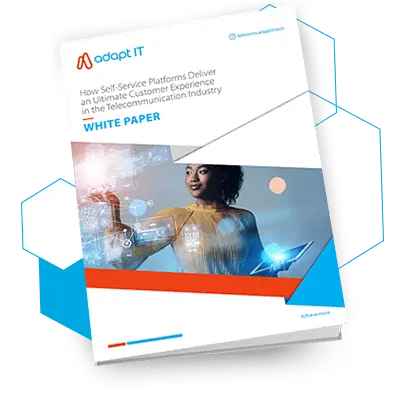OSS and BSS system requiremets are being propelled by new telecom industry trends. With new service layer architecture and customer experience management at the centre, this has resulted in a non-optional switch to automated systems and management-as-service logic.
Table of Contents
ToggleTelecom industry trends drive OSS and BSS systems requirement changes
Network operators report that OSS and BSS systems are being driven by service layer architecture.
Key changes include:
- The transformation from a supply-propelled to demand-propelled vision.
- The transformation from operational resource support to automated support.
- Transformation from management-as-an-overlay to management-as-service.
In the future, the services of the network will be made up of customer experiences which include:
- Transport/connection touchpoints.
- Content and processing resources.
- Subscriber know-how.
- Customer Behaviour.
- Customer location.
The focus shifts to the services provided to the customer.
The network transport and connection elements are arranged into services and experiences through a new service layer.
Impact to telecoms of system changes on OSS/BSS
- Telecommunication companies are diversifying by offering multi-play digital services and personalized pricing but with this, comes the need to upgrade and sometimes, completely transform their OSS and BSS systems in order to support these new offerings.The transitioning business model of telecommunication providers is pushing change in the future OSS and BSS infrastructure; something that may soon look like this:
- Moving away from “technology-centric” to “customer-centric”. Most telecoms offer the same standard services, so it has become imperative to differentiate and personalized customer experience achieves this. As a result, OSS and BSS systems are starting to develop technology to gather consumer data, in order for telcos to understand their users. (Adapt IT|Telecoms has already developed a first-of-its-kind technology to enable this).
- As operators begin to shift their focus to the customer, they will need to quickly respond to the market with new services, offers and promotions. Using analytics, OSS and BSS systems become strategic business resources to predict customer behaviour.
- With different offerings intersecting across customer interactions and operations, telecommunications companies will need support systems that are able to perform on a unified platform. The OSS/BSS model of the future is transitioning into a platform-based interconnected system for the purpose of ease and flexibility.
- The BSS “hub” is becoming a multi-vendor system so that telcos can shift to generating revenue from data services alone, and this involves multiple parties.
- Customer interactions are increasingly moving into self-service driven digital channels in the OSS arena, allowing for an approach that brings relevant information into a single data lake, providing meaningful data from analytics.
How OSS and BSS systems operate together
OSS and BSS connect technology to the customer experience. Analytics, cloud computing, virtualized networks and software-defined networking join forces to make everything work. OSS and BSS systems give the user the ability to choose which technologies in the network they want to use and how they want to be charged for them.
These systems join various parties together in order to provide a solution for the user. It requires many systems, integrations, business processes and so on to make everything work well and offer a seamless end-user experience.
OSS and BSS challenges in the market
Searchnetworking provides a good introduction to future OSS and BSS challenges in the market:
“In today’s packet-switched, content-driven, multi-network, multi-technology world, you not only have to pave the highway, you have to manage the traffic that’s screaming down that highway, ensuring that vehicles of every type flow smoothly to all destinations.”
As a telco, your main aim has to be bringing customer-winning products, services and promotions to market faster and better than your competitors, and with a good price tag to keep customers loyal.
It is therefore essential that every MNO and MVNO make sure they adopt the new OSS and BSS system requirements that are in line with new telecom industry trends because while you may find it cumbersome to upgrade and update, your competitors will only be too glad to take on your problems and make your customers theirs.
If you want to stay in business, adopting new OSS/BSS system requirements is not optional.
Practically speaking, what does this mean?
- Speed of service. Users must be able to quickly access any service from any device.
- Automated service fulfilment, which includes customer self-service, with no or little human intervention, so that users can experience speed and the least amount of hassle.
- Gain a competitive advantage by provisioning users and services rapidly and accurately.
Give Full Control To Your Corporate Customers
Learn how our Corporate Customer Self Service (CCSS) solution allows MNO’s and MVNO’s corporate customers to control their own contracts and alleviate unnecessary support queries in this free white paper

Steven Sutherland experienced Adapt IT Divisional Executive, dynamic business leader for their Telecoms Division with a demonstrated 25-year history in the telecommunications and IoT sectors. Strong global marketing, sales, and business development professional with 15 plus years focused experience in the Southern and Rest-of-Africa markets and a unique blend of entrepreneurial spirit combined with a passion for both technology and business.
At Adapt IT Steven is responsible for building and growing the Telecoms Division on top of its industry-proven software competencies including but not limited to Customer Experience and Self Service, NextGen VAS, IoT, FINTECH, and Advanced Analytics. Steven is always looking forward to an opportunity to demonstrate the value that his 20 plus years of experience in these disciplines can bring to your business







